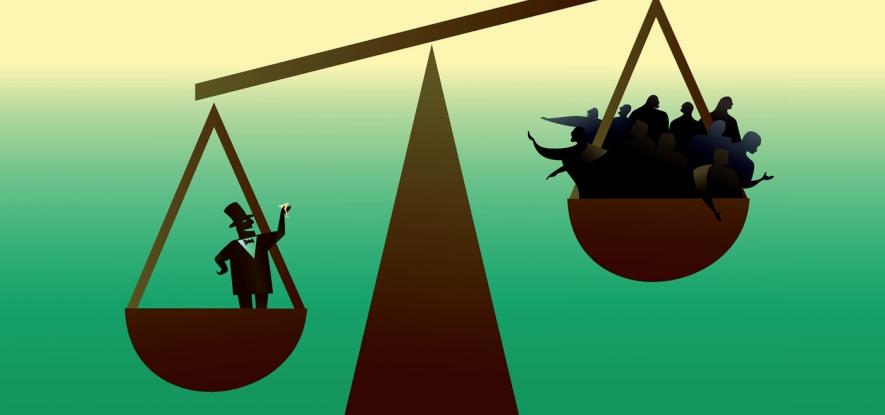Growing Wealth Inequality: India to Triple Billionaire Tally By 2027

Image Coutesy: Foundation for Economic Education
According to a report by the AfrAsia Bank, the number of billionaires in India, at present, is 119 and this number is expected to triple and reach 357 by 2027. Interestingly, this has been predicted for a country, which had a per capita income of $1983 for the year 2017.
The same report also says that the private wealth held by all the individuals living in the country stood at a staggering $8230 billion, in 2017, making India the sixth wealthiest country in the world. The report shows that there has been a 25 per cent increase in this figure from 2016, which is the highest growth across all countries. This figure is expected to grow by 200 per cent and reach $24691 billion by 2027 to make India the third wealthiest country.
The report also provides a window into the level of inequality in the country. It states that 48 per cent of the wealth in India is held by High Net Worth Individuals or millionaires. According to the same report, in 2017, the number of millionaires in India was 330,400. What this means is that, in a country of 1.3 billion plus people, just 3.3 lakh or just about 0.025 per cent of people own almost half of the wealth.
This report is only an eye-opener into the state of inequality in the country. It had been reported earlier this year that the top one per cent in India had cornered 73 per cent of the additional wealth generated in 2017. That figure, while being shocking in itself, becomes even more shocking when compared to the average share of the wealth cornered by the top one per cent in the years prior, which stood at 58 per cent. This means that inequality is rising quicker with time.
This growing inequality is not limited to India alone. It has been reported that the past year saw the wealth of billionaires across the world increase by $762 billion, which is enough to end extreme poverty seven times over according to Oxfam. While the poorest half of the world’s population saw no increase in their wealth, 82 per cent of all wealth generated across the world was cornered by the richest one per cent of the world.
A point to be noted here is that the corresponding figure, of how much wealth was cornered by the top one per cent, was lower for India than the world average. However, the level of inequality still remains higher as the world figure for share of wealth owned by the one per cent was at 50 per cent, while for India, this was at 58 per cent.
This comes at a time when rural income and farmers’ income, in India, have remained stagnant for the past three years. By January of this year, the growth in rural wages had fallen to just over three per cent, the lowest since 2014 – the year in which the Modi government came to power. The economic survey of 2018 also suggests that the income losses that farmers could suffer from climate change “could be between 15 percent and 18 percent on average, rising to anywhere between 20 percent and 25 percent in unirrigated areas.”
It must also be noted that these trends are not very new and are not restricted to the present government; it has been shown that in the years prior to liberalisation, the trend was in the reverse. Between 1951 and 1980, the top 0.1 per cent actually witnessed a decline in their income while the bottom 50 per cent managed to capture 28 per cent of the increase in total income. However, in the period from 1980 and 2014 the top 0.1 per cent captured a higher share of the increase in income at 12 per cent, than the entire bottom 50 per cent who got 11 per cent. It is the implementation of neoliberal policies during the liberalisation era that has resulted in the increasing level of inequality.
What these reports and figures show is that the continuation of present dominance of neoliberalism in policy-making will only result in furthering inequality. The conditions that will be imposed upon the poor may lead to an intensification of struggles and result in more protests such as the ‘Kisan Long March’, in which 50,000 farmers marched to the financial capital of India – Mumbai.
Get the latest reports & analysis with people's perspective on Protests, movements & deep analytical videos, discussions of the current affairs in your Telegram app. Subscribe to NewsClick's Telegram channel & get Real-Time updates on stories, as they get published on our website.























